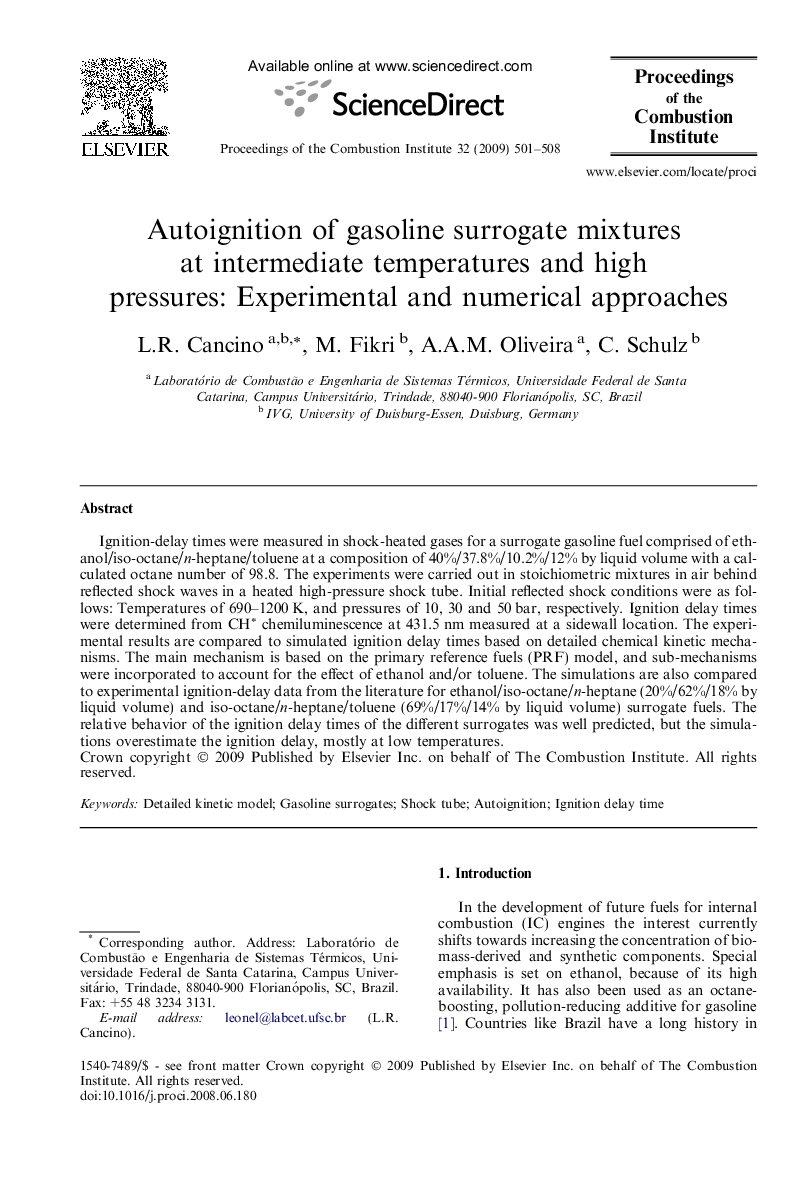| Article ID | Journal | Published Year | Pages | File Type |
|---|---|---|---|---|
| 6679442 | Proceedings of the Combustion Institute | 2009 | 8 Pages |
Abstract
Ignition-delay times were measured in shock-heated gases for a surrogate gasoline fuel comprised of ethanol/iso-octane/n-heptane/toluene at a composition of 40%/37.8%/10.2%/12% by liquid volume with a calculated octane number of 98.8. The experiments were carried out in stoichiometric mixtures in air behind reflected shock waves in a heated high-pressure shock tube. Initial reflected shock conditions were as follows: Temperatures of 690-1200Â K, and pressures of 10, 30 and 50Â bar, respectively. Ignition delay times were determined from CHâ chemiluminescence at 431.5Â nm measured at a sidewall location. The experimental results are compared to simulated ignition delay times based on detailed chemical kinetic mechanisms. The main mechanism is based on the primary reference fuels (PRF) model, and sub-mechanisms were incorporated to account for the effect of ethanol and/or toluene. The simulations are also compared to experimental ignition-delay data from the literature for ethanol/iso-octane/n-heptane (20%/62%/18% by liquid volume) and iso-octane/n-heptane/toluene (69%/17%/14% by liquid volume) surrogate fuels. The relative behavior of the ignition delay times of the different surrogates was well predicted, but the simulations overestimate the ignition delay, mostly at low temperatures.
Related Topics
Physical Sciences and Engineering
Chemical Engineering
Chemical Engineering (General)
Authors
L.R. Cancino, M. Fikri, A.A.M. Oliveira, C. Schulz,
